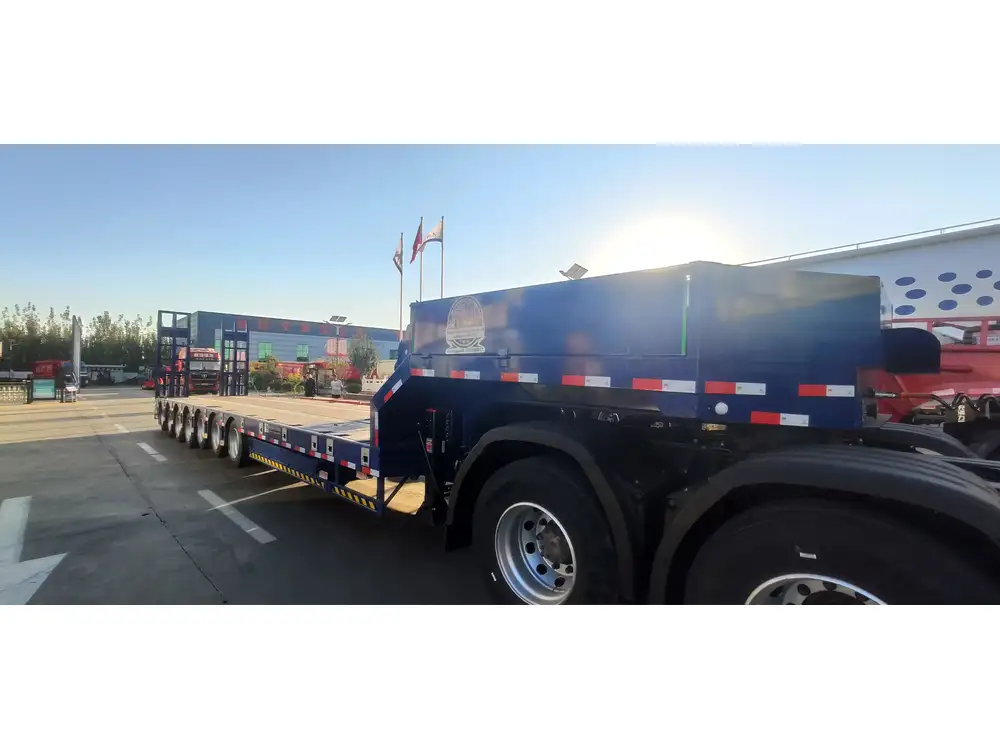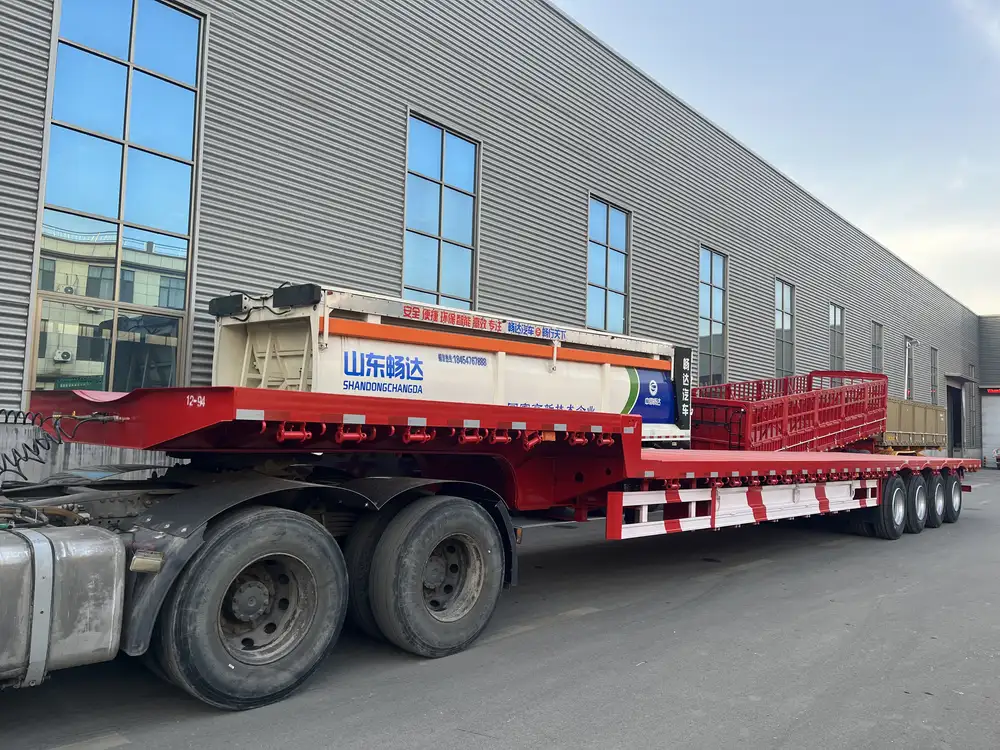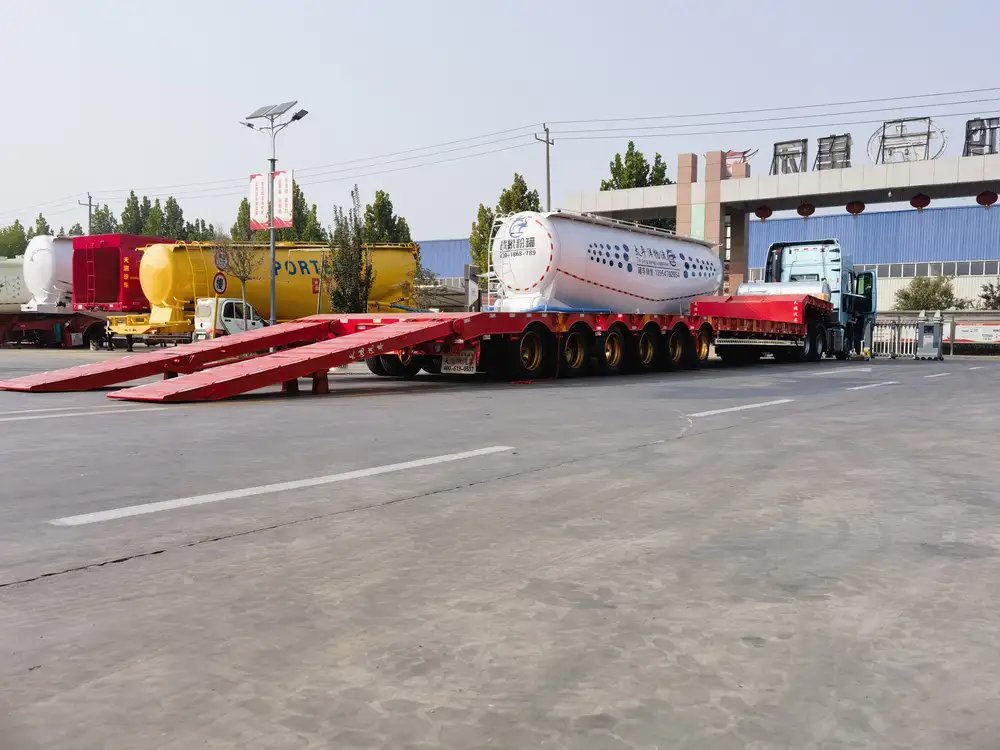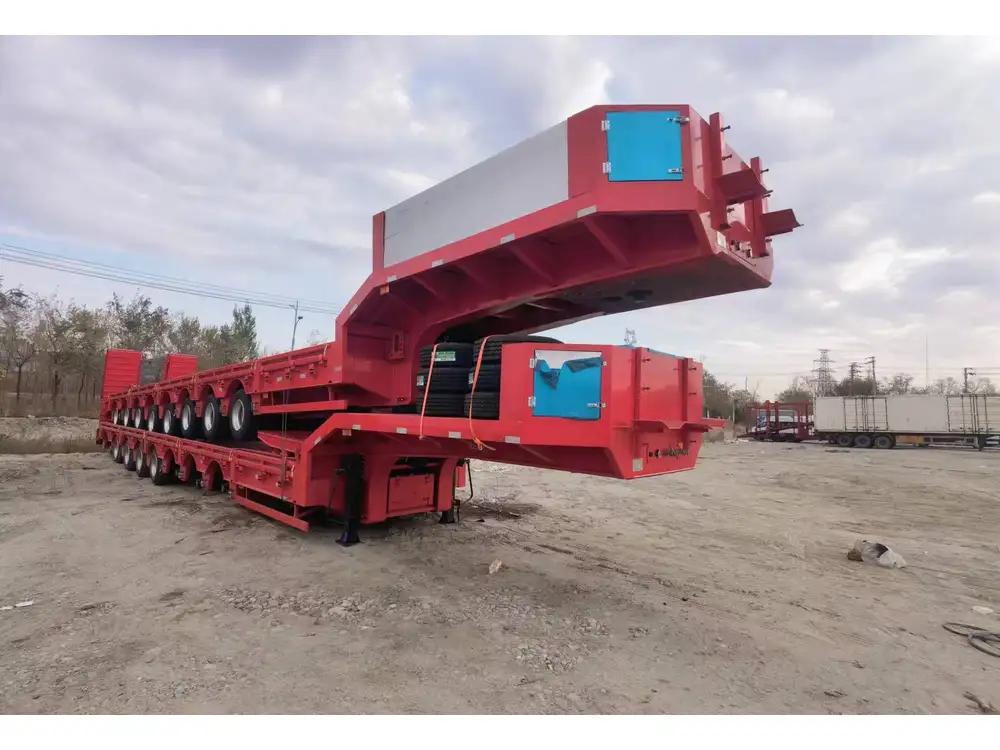When it comes to the transportation industry, one of the primary concerns is understanding the weight limitations imposed on semi-trailers. As a manufacturer of semi-trailers, it is crucial to provide clarity on how much weight can be legally and safely transported. The weight-bearing capacity is a complex topic influenced by various factors, including federal regulations, state laws, trailer specifications, and even the type of cargo being transported. This detailed guide aims to dissect the intricacies of semi-trailer weight limits, ensuring that both manufacturers and operators can make informed decisions.
1. Federal Regulations Governing Weight Limits
1.1. The Federal Bridge Law
The Federal Bridge Law outlines the maximum allowable weights for vehicles and cargo on federal highways in the United States. The law is designed to protect the integrity of highway infrastructure while ensuring the safe transport of goods. Key provisions include:
- Weight Capacity: The federal axles’ weight limits are determined based on the number of axles and the spacing between them.
| Number of Axles | Maximum Weight (lbs) |
|---|---|
| 2 Axles | 34,000 |
| 3 Axles | 42,000 |
| 4 Axles | 50,000 |
| 5 Axles | 60,000 |
| 6 Axles | 70,000 |

1.2. Gross Vehicle Weight Rating (GVWR)
The Gross Vehicle Weight Rating (GVWR) refers to the maximum total weight a vehicle can safely handle, which includes the weight of the trailer itself, cargo, and any other accessories. It is determined by the manufacturer and should not be exceeded.
- Determining GVWR:
- Consider the weight of the tractor and trailer.
- Factor in the gross weight of the load.
- Include passengers and additional items.
Understanding GVWR is essential since exceeding this limit can lead to severe penalties and increased safety risks.
2. State Regulations and Variations
While federal regulations set the foundational weight limits, individual states may impose additional restrictions. Variations can arise based on:
- State-specific weight limits: These can differ significantly, depending on local infrastructure and roadway conditions.
- Permitting processes: Some states offer permits for overweight loads, allowing for increased transport flexibility under specified conditions.
2.1. Key State Regulations
Each state publishes its own specific weight limits for commercial vehicles, and these are critical for operators to understand. Here are key examples:
| State | Maximum Allowable Weight (lbs) |
|---|---|
| Texas | 80,000 |
| California | 80,000 |
| New York | 88,000 (with a special permit) |
Navigating these regulations is essential for compliance and safety.

3. Semi-Trailer Specifications Affecting Weight Capacity
Understanding how semi-trailer specifications affect their weight limits is vital for both manufacturers and operators. The design and material used in semi-trailers significantly influence their load-bearing capabilities.
3.1. Types of Semi-Trailers
- Flatbed Trailers: Typically designed to carry heavy and oversized loads, such as machinery or construction materials.
- Enclosed Trailers: Often used for transporting sensitive goods, offering better security and protection from the elements.
- Reefers: Refrigerated trailers specifically engineered for temperature-sensitive cargo.
3.2. Material Composition
Trailers can be constructed from various materials, including steel, aluminum, and composites. Each material type has unique properties affecting strength and, by extension, load capacity.
- Steel Trailers: Highly durable but heavier, which can lower the overall load capacity.
- Aluminum Trailers: Lighter than steel, allowing for a higher cargo weight limit while maintaining strength.

4. Loading Distribution and Balance
Correct loading is crucial for achieving maximum allowable weight while ensuring vehicle stability. Improper weight distribution can lead to several issues, including:
- Increased Risk of Rollovers: Unevenly balanced loads can make trailers more susceptible to tipping.
- Excessive Tire Wear: Poor weight distribution can lead to faster tire degradation, increasing operational costs.
4.1. Best Practices for Weight Distribution
- Load Placement: Ensure that heavier items are placed on the bottom and centered over the axles to promote stability.
- Weight Checks: Regularly utilize truck scales to check the distribution before embarking on a journey.
Maintaining the proper load balance is not just a suggestion but a critical aspect of safe transport practices.
5. Impact of Cargo Type on Weight Limits
Understanding how different types of cargo influence semi-trailer weight limits is essential for planning. Specific cargo types often come with unique weight considerations:

5.1. Liquid Cargo vs. Solid Cargo
- Liquid Cargo: Often requires specialized tankers and presents unique challenges in maintaining stability during transport. Additionally, sloshing liquid can shift weight unexpectedly.
- Solid Cargo: While often more stable, heavy solid items can add significant weight, necessitating careful consideration of trailer settings.
5.2. Hazardous Materials Regulations
Transporting hazardous materials (hazmat) comes with stringent regulations that affect weight limits, including:
- Weight restrictions based on material class: Different classes of hazmat have varying weight limits due to safety considerations.
Operators must remain vigilant and compliant with relevant regulations to mitigate risks.
6. Understanding Permits for Overweight Loads
Obtaining permits for overweight semi-trailer loads is fundamental for legal and safe transport. The process involves understanding which loads require permits and how to acquire them.

6.1. Types of Overweight Permits
Permits can generally be categorized into two main types:
- Single-Trip Permits: These are temporary permits issued for one specific journey.
- Annual Permits: These allow for multiple trips and usually apply to specific types of vehicles or loads.
6.2. Application Process
The application process for overweight permits can vary significantly by state:
- Determine if the load exceeds standard weight limits.
- Submit an application to the respective state transportation department.
- Pay the requisite fees.
- Provide detailed information about the vehicle and load.
Gaining a thorough understanding of this process is critical for efficient and legal transport operations.
7. Safety Considerations and Best Practices
Safety is paramount in the transport industry. Several best practices can help ensure safe operations while adhering to weight limits.

7.1. Regular Inspections
Conducting routine inspections of every semi-trailer before and after trips can help identify potential issues:
- Check tires for wear and proper inflation.
- Inspect brakes and lights for proper functionality.
- Evaluate load securement to prevent shifting during transit.
7.2. Training for Operators
Providing thorough training for operators on load management, weight distribution, and legal limits is important to maximize both safety and compliance.
7.3. Use of Technology
Investing in technology such as weight monitoring systems can provide real-time data on load and balance, facilitating proactive management and ensuring compliance with weight limits.

Conclusion
In conclusion, understanding how much weight can be put on a semi-trailer requires a multifaceted approach. The federal and state regulations, specific trailer specifications, and careful consideration of loading practices all play critical roles in determining permissible weight limits. Furthermore, adhering to safety considerations and utilizing technology for ongoing compliance can significantly enhance operational efficiency. As manufacturers, our commitment to quality and adherence to regulations ensures that our semi-trailers not only meet but exceed the industry’s evolving demands. With this knowledge in hand, transport operators can make informed decisions that enhance safety, efficiency, and compliance, ultimately paving the way for successful transport endeavors.



